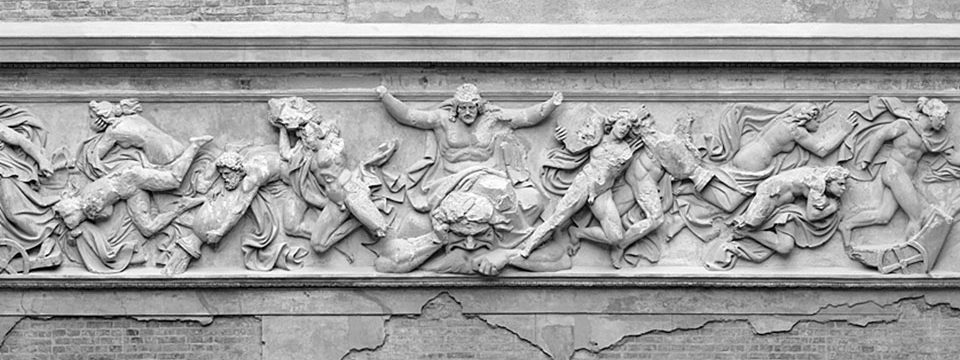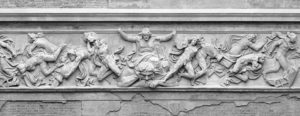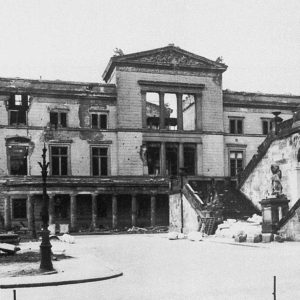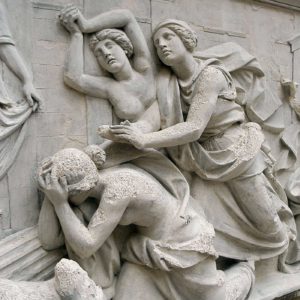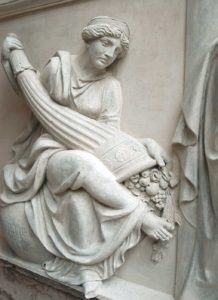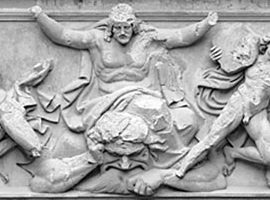The Schievelbein frieze in the Neues Museum in Berlin
Conservation and Restoration of the Schievelbein Frieze in the Greek Courtyard
Inspired by Edward Bulwer-Lytton’s novel “The Last Days of Pompeii,” the frieze by Hermann Schievelbein’s workshop was executed in three-quarter relief using stucco application technique and completed in 1851. The largest single artwork of the New Museum, stretching approximately 65 meters in length, was significantly damaged in both substance and appearance due to the direct effects of World War II and the destruction over more than forty years of ruin.
The restoration of the frieze was carried out in several stages, interspersed with longer breaks during which routine revisions provided insights into its condition. Following a model restoration of the Luna figure in 1996, the initial restoration phases in 1997 – 1998 and 2001 – 2002 primarily focused on cleaning the frieze and consolidating its substance. As the Greek Courtyard was only temporarily roofed at that time, the measures had to be designed as if for an object exposed to the elements. Numerous missing pieces and splinter fractures were closed or overlaid with securing additions using a special application technique. The final restoration phase from 2007 to 2008 aimed primarily at calming and unifying the highly heterogeneous appearance to that point. By this time, the frieze in the now weather-protected Greek Courtyard could be considered fully conserved. This phase involved standardizing the surface treatments of all additions, performing targeted further additions, and finally applying a semi-transparent lime wash over the entire surface.
Client
Federal Office for Building and Regional Planning Berlin on behalf of the Stiftung Museen zu Berlin Preußischer Kulturbesitz
Execution
1996 – 2008

